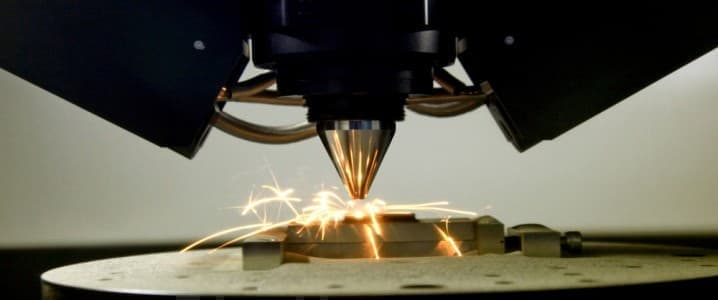Port congestion, delivery delays, and shortages have become a mark of the pandemic world that is not showing signs of going away anytime soon. It is in times like this that disruptive, transformational technology shines and 3D printing is no exception. Additive manufacturing, as it is also known, has been around for quite a while now, and while we haven’t yet reached the point of having 3D printers in every home, energy companies have been paying close attention and are now using the technology to cope with part shortages.
The Wall Street Journal recently reported that Chevron had turned to additive manufacturing to secure parts necessary for the maintenance of its $54-billion Gorgon LNG project. Chevron had to turn to additive manufacturing due to fears that maintenance would be delayed if the company had ordered ready-made parts.
“We’ve learned a lot from those parts. The most important thing is that we’ve shown that this flexible, right part, right time digital supply-chain approach can be successful, and it can meet our needs in a sort of reactive mode,” the WSJ quoted Chevron manager Robert Rettew as saying.
Chevron is hardly an exception. Shell recently boasted cost reductions, shorter lead times, and perhaps more importantly in the context of the global political agenda, a lower carbon footprint thanks to an increased reliance on 3D printing, per a report in 3D Printing Industry.
The oilfield service giants have also been active in the additive manufacturing space. According to them, 3D printing allows for the construction of much more complex components than traditional manufacturing at a much lower cost—but with the same high precision. These complex components could significantly enhance the efficiency of all sorts of operations, from oil drilling to gas turbine manufacturing. Related: Natural Gas Prices Soar As Putin Punks Europe The oil and gas industry is notorious for being slow to adopt new technology, but 3D printing adoption is proving that even the slowest tech adopters could change. And there is a good reason for that change. According to the World Economic Forum, additive manufacturing could save the oil and gas industry some $30 billion annually in time and costs.
It could also save billions in unplanned downtime. According to the Wall Street Journal report, one company has estimated that unplanned downtime in the Gulf of Mexico could cost an oil company some $20 million annually. For a bigger operator, Energy and Industrial Advisory Partners estimates the annual cost of unplanned downtime at up to $50 million.
At a time when oil and gas companies are being constantly pressured to keep their costs low—and their carbon footprint even lower—additive manufacturing could really come into its own in this industry.
The technology can certainly help companies overcome the challenges posed by supply chain disruptions. This is, in fact, one of the biggest growth areas for additive manufacturing in oil and gas, Baker Hughes’ global head of additive manufacturing services, Mikhail Gladkikh, told Oilprice last year when the global supply chains began breaking down amid the lockdowns.
Another growth area is in complex parts, which would be a lot more expensive to produce using traditional manufacturing methods. This does not mean, however, that every part is cheaper with 3D printing. On the contrary, the most common parts used in the oil and gas industry will continue to be more affordable when traditionally produced. Yet, as the industry seeks ever newer ways to keep its costs low while increasing the efficiency—and lowering the carbon footprint—of its operations, demand for new, complex parts is likely to rise in the coming years. Related: Senate Majority Leader Urges Biden To Release Oil From SPR
By 2025, the additive manufacturing market could be worth $32 billion, rising to $60 billion by 2030, even if it currently represents a minute 0.1 percent of the global manufacturing market. In this context, the port logjams, delivery delays, and shortages are positive things for additive manufacturing. These challenges are driving the faster adoption of the technology as companies lack any other alternatives.
“Companies who may have tentatively taken their first steps last year are now starting to mature their interest,” the chief executive of 3D Metalforge, told the Wall Street Journal.
“Because of supply chain disruptions, we have significantly been growing in the order of a few folds,” chimed in the head of Italy-based Roboze, which opened an office in Houston last year and has since then doubled its global staff to keep up with the rising demand for its 3D printing services, the WSJ notes.
ADVERTISEMENT
Additive manufacturing has always held substantial promise for the oil and gas industry because of its nature, which involves the use of complex machinery. This promise may have been slow to be realized, but the persistent challenges posed by the pandemic have sped up the process. These challenges may have also turned 3D printing from a somewhat exotic technology for use in emergencies only into something that is as mainstream as remote work.
By Irina Slav for Oilprice.com
More Top Reads From Oilprice.com:
- Metals Will Be The Oil Of The Future
- The Double Irony Of Biden's Plea To OPEC
- Will A Strategic Petroleum Release Bring Down U.S. Gasoline Prices?


















